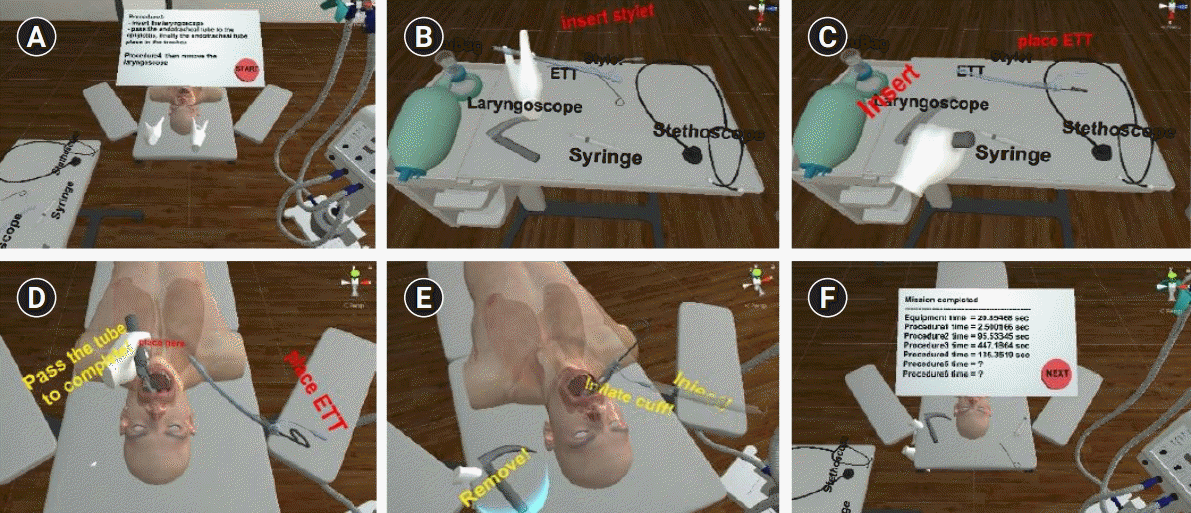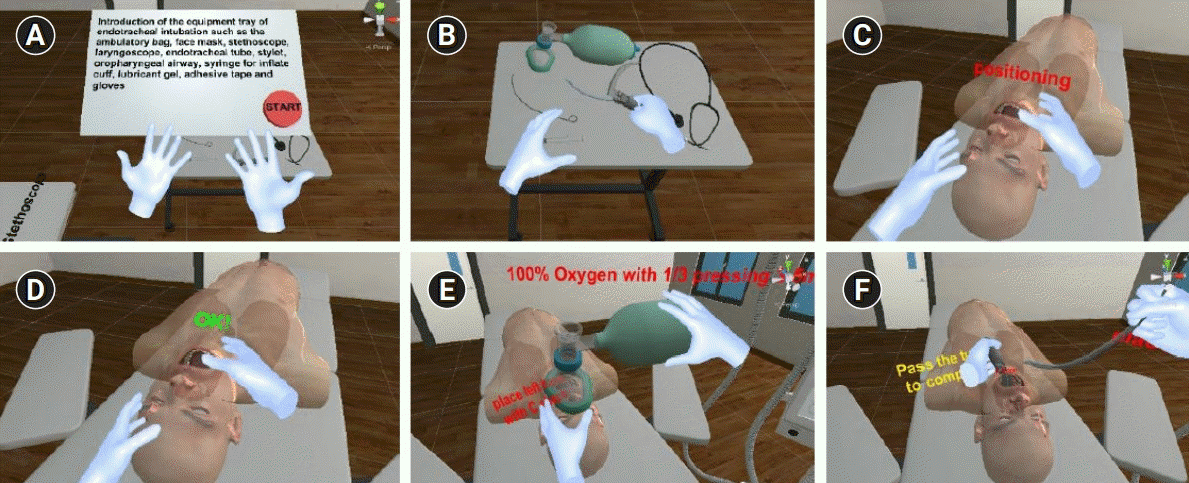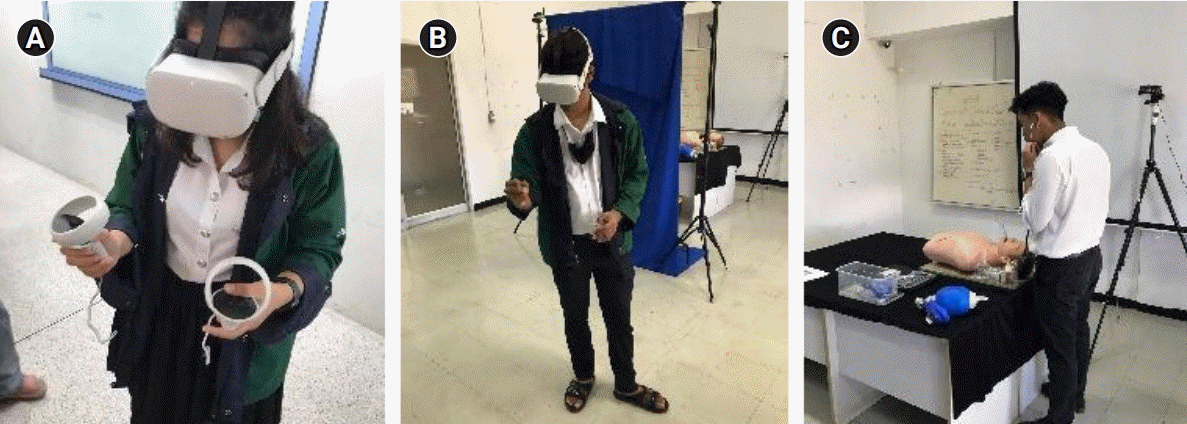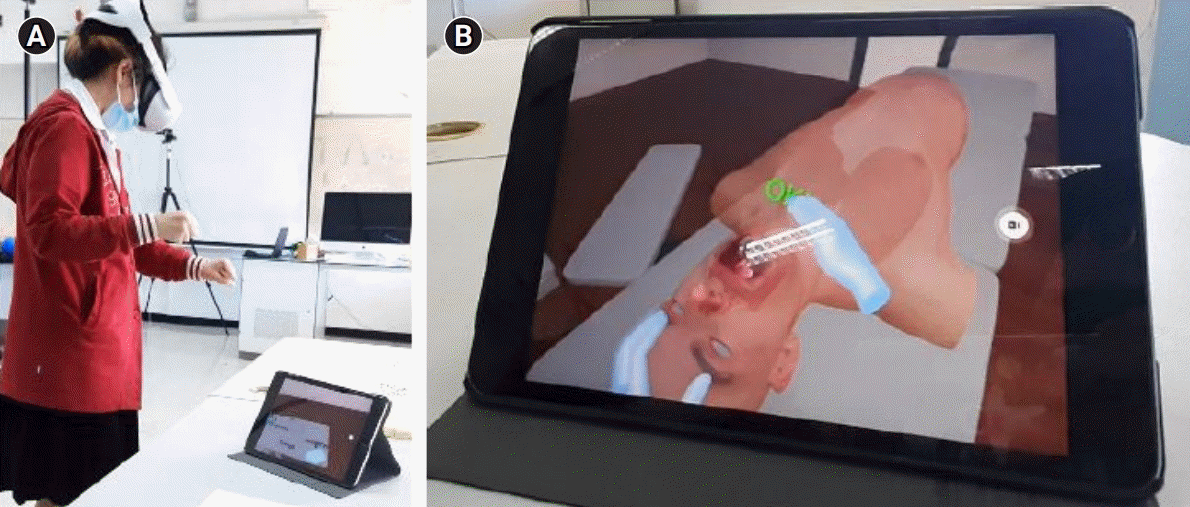Abstract
Purpose
Methods
Results
Conclusion
Notes
Authors’ contributions
Conceptualization: CK, FN. Data curation: CK, NS. Methodology/formal analysis/validation: CK, NS. Project administration: CK. Funding acquisition: CK. Writing–original draft: CK, NS. Writing–review & editing: CK, NS, FN.
Data availability
Data files are available from Harvard Dataverse: https://doi.org/10.7910/DVN/5TXL3N
Dataset 1. Student list and schedule.
Dataset 2. Pre-test scores of all groups.
Dataset 3. Post-test scores of all groups.
Dataset 4. Practice scores of all groups.
Dataset 5. System Usability Scale (SUS) and User Satisfaction Evaluation Questionnaire (USEQ) questionnaires scores of virtual realitygroups.
Supplementary materials
References
Fig. 1.

Fig. 2.

Fig. 3.

Fig. 4.

Fig. 5.

Fig. 6.

Fig. 7.

Table 1.
Table 2.
| Group | Pre-test (n=10) | Post-test (n=10) | Practice (n=14) |
|---|---|---|---|
| Video | 4.40±1.88 | 6.47±1.45 | 6.42±2.29 |
| VR controller | 4.07±1.33 | 7.73±1.22 | 10.62±1.90 |
| VR hand tracking | 3.67±1.59 | 7.47±1.25 | 11.42±2.11 |
Table 3.
| Source of variation | SS | MS | F | Sig. |
|---|---|---|---|---|
| Pre-test | 4.044 | 2.022 | 0.773 | 0.468 |
| Post-test | 13.378 | 6.689 | 3.880 | 0.028a) |
| Practice | 216.400 | 108.200 | 44.462 | 0.000b) |
Table 4.
| Group | No. | Mean | SD | SE | t-value | Sig. |
|---|---|---|---|---|---|---|
| VR controllers | 15 | 67.1667 | 18.91869 | 2.022 | 0.849 | 0.588 |
| VR hand tracking | 15 | 60.1667 | 25.71247 | 108.200 |




 PDF
PDF Citation
Citation Print
Print




 XML Download
XML Download